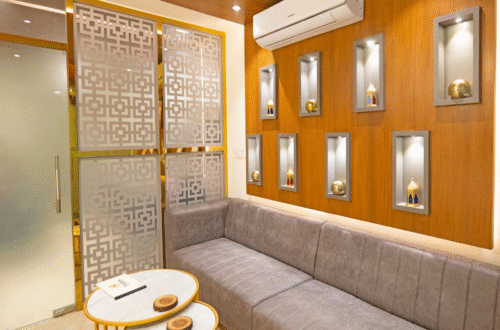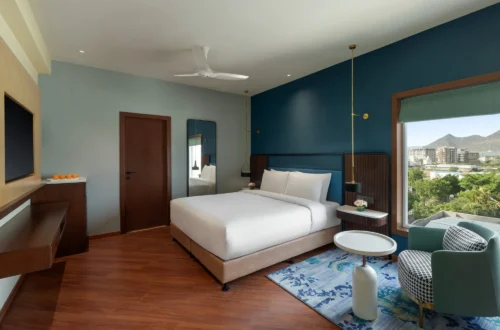When it comes to elevating outdoor spaces with timeless beauty and enduring strength, choosing the right stone is crucial. Among the popular choices, granite and sandstone both offer unique aesthetic and functional benefits. Whether you’re planning a patio, walkway, garden path, or poolside deck, understanding the properties of each material can help you make an informed decision. For projects that demand strength and sophistication, working with a trusted Granite Supplier in India ensures quality and consistency in results.
Visual Appeal and Natural Texture
Granite and sandstone differ greatly in visual texture and appearance. Granite is known for its polished finish, tight grain, and speckled composition. Its sleek surface adds a modern look to contemporary outdoor settings, making it ideal for luxurious patios and minimalist landscapes. In contrast, sandstone offers a more rustic, earthy appeal with its layered structure and warm tones. This makes it perfect for traditional courtyards, garden pathways, or cultural outdoor themes. Each stone brings a distinct mood—granite leans toward elegance and refinement, while sandstone evokes warmth and natural charm.
Durability and Weather Resistance
Outdoor surfaces must endure a variety of climate conditions. Granite is one of the hardest natural stones, offering high resistance to abrasion, extreme weather, and moisture. It performs exceptionally well in areas with heavy foot traffic or exposure to water, making it ideal for outdoor kitchens, steps, or pool surrounds. On the other hand, sandstone is more porous and relatively softer, which means it requires sealing to protect it from stains and moisture penetration. While sandstone can age beautifully, it needs more upkeep compared to granite to maintain its original texture and tone over time.
Slip Resistance and Surface Safety
Safety is a key consideration for any outdoor flooring choice. Granite, when polished, can become slippery when wet. However, it is available in flamed or brushed finishes that offer better traction for outdoor use. These textures enhance safety without compromising on aesthetics. Sandstone naturally provides better grip due to its coarse surface, even when wet, making it an excellent choice for pathways and areas near water features. Both materials can be treated or finished to increase their slip resistance, but understanding your space’s specific usage will guide the best option.
Installation and Maintenance Requirements
Ease of installation and ongoing maintenance are important for both residential and commercial projects. Granite’s weight and density require professional handling during installation. Once installed, it is relatively low-maintenance—only needing periodic cleaning and occasional sealing. Its stain resistance is a huge advantage in outdoor dining or cooking areas. In comparison, sandstone is easier to cut and shape, offering design flexibility. However, it is more prone to erosion, algae growth, and discoloration if not maintained properly. Regular sealing and cleaning are necessary to preserve its look and strength.
Cost and Long-Term Investment
While granite tends to be more expensive initially due to its density and labor-intensive processing, it offers excellent long-term value thanks to its lifespan and low upkeep. For large-scale or high-end projects, the investment in granite is often justified by its durability and timeless appeal. Sandstone is generally more affordable and suits those seeking a warm, natural look without a high upfront cost. However, the increased maintenance over time should be factored into the total expense. The choice between them depends on your design priorities, budget, and willingness to invest in upkeep.
Best Use Cases Based on Style and Application
Granite is ideal for high-traffic outdoor floors, countertops, and steps where strength and elegance are desired. It works well in modern villas, commercial outdoor lounges, and upscale pool areas. Sandstone, with its organic texture, suits garden paths, patios, and heritage-style courtyards. Its earthy tones blend effortlessly with natural surroundings and traditional architecture. For designers aiming to balance aesthetics with practicality, both stones can be mixed strategically to create varied textures across a landscape.
Sourcing and Quality Assurance
Choosing reliable sources is essential when selecting natural stones for outdoor applications. A dependable Sandstone Supplier in India will ensure that the materials are tested, graded, and responsibly quarried. Consistent quality, accurate cutting, and proper finishing enhance the installation process and result in long-lasting outdoor elegance. For international buyers and architects, sourcing from suppliers with export expertise ensures timely delivery and adherence to project specifications.
Conclusion: Style Meets Substance
Both granite and sandstone have their own strengths when it comes to stylish outdoor design. Granite offers durability, sleekness, and long-term performance. Sandstone provides natural beauty, a warm palette, and a more relaxed feel. Your choice should depend on the project’s design goals, budget, and maintenance capacity. Working with experienced suppliers ensures that the material not only meets aesthetic expectations but also performs reliably in outdoor conditions. Whether you choose the sleek confidence of granite or the inviting character of sandstone, the result will reflect both quality and thoughtful design.





